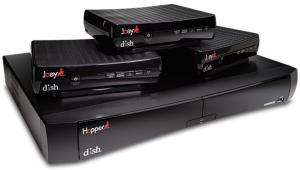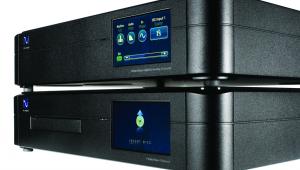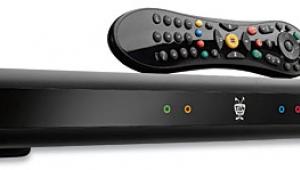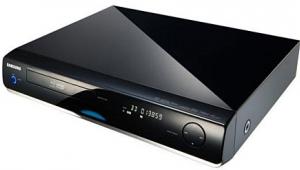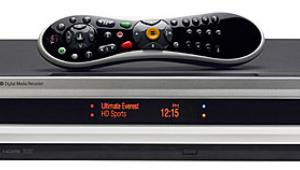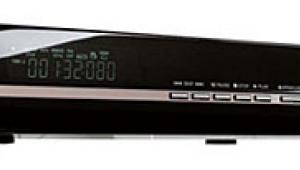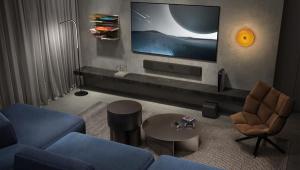This Is Not a DVD Player
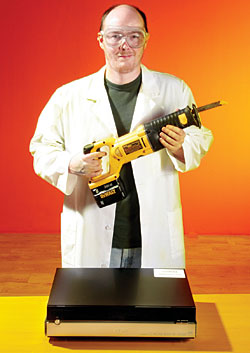 Inside Toshiba's HD-XA1 HD DVD player.
Inside Toshiba's HD-XA1 HD DVD player.
Well, of course I was going to take it apart. Check out Gary Merson's review, and you'll see why my interest was piqued. After all, at first glance, this is just a DVD player that happens to play the next generation of discs. It very much is not.
Pop the Top
After you remove the five screws on the back of the unit, the lower plastic side pieces jettison, and the top slides back to reveal. . .nothing. The plastic shell is merely decorative. A steel shroud encases the entire inside. This makes it look a lot like a computer (a bit of foreshadowing there). Remove the four screws along the side, and the need for this metal becomes apparent.
Surprise!
Well, that sure is a motherboard. I mean, it's a legit motherboard. Look at Figure 1. You'll see the 2.5-gigahertz Pentium 4 toward the top of the image (therefore, the back of the unit). It's the one with the copper octagon and silver metal bracing. Notice the heat pipe that sucks the heat toward the heatsink to the left. This is attached to a centrifugal fan that blows out across the heatsink toward another fan on the back of the unit. These dueling fans are obviously required to keep the processor and other internals cool, but they do nothing to keep the noise down. In a quiet theater, the player is audible, though less so than any other HTPC I've heard (except for maybe the one I built). A word of caution: I wouldn't bury this thing in a rack, or it will certainly cook itself.
On the opposite side (under my finger) is the 1 gigabyte of Hynix DDR 333-megahertz RAM. Other than the lack of PCI/AGP card slots and a hard drive, this is pretty much what you'd find in a PC circa 2002. I'm told that it runs Linux, which I suppose it would need to use; if it ran Windows, it would take five minutes to boot and crash all the time.
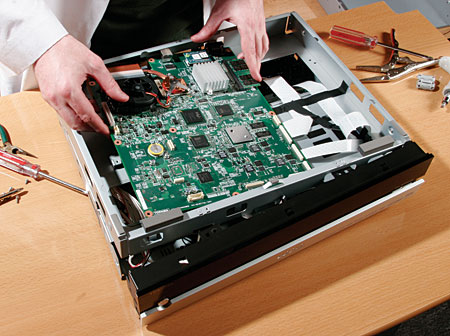
Figure 1
When I peeled away this layer (delicately), I revealed the output board visible toward the back of the player. Interestingly, in addition to a Silicon Image chip set on this board, there is a Pioneer chip. Pioneer is firmly in the Blu-ray camp, but, I guess when it comes to selling ICs, money knows no tech feuds. Along the bottom in Figure 2, you can see the rather elaborate and beefy power supply. Capacitors like that haven't been used in many DVD players in a long time, but, as I mentioned, this isn't a DVD player. In the middle is the computer HD DVD drive, made by NEC.
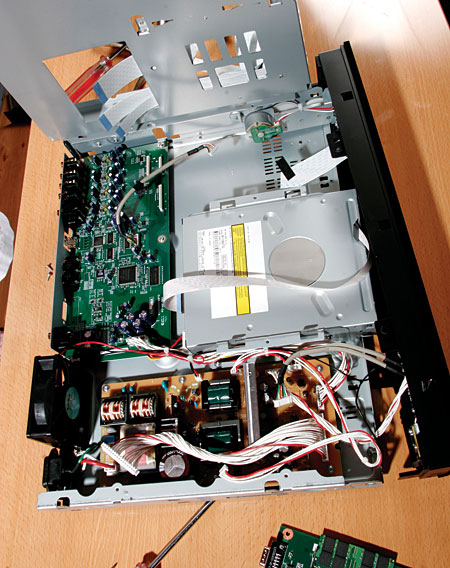
Figure 2
Compare/Contrast
Figure 3 shows how much more involved the HD-XA1 is than a modern scaling DVD player. Nearly 10 years of advancement has produced DVD players that can output 1080p with basically one small circuit board and with less than 1 inch of height (for less than $200). By comparison, this first-generation HD DVD player shows how much more work is involved to decode 1080p content, interlace it, transcode/downrez it if necessary, and output it (and only at 1080i). They wouldn't build it this way unless it was the cheapest way to do it. In 9 years, if either HD DVD or Blu-ray makes it that long, the players will surely resemble what DVD players look like today—cheap, thin, and nearly disposable.
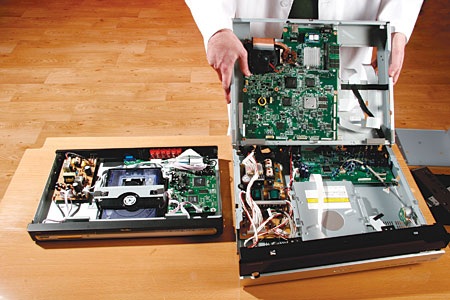
Figure 3
There are many of you out there who cynically look at HD DVD and Blu-ray as just another way for the studios and equipment manufacturers to squeeze more money out of you. Well, duh. Obviously, that's why they do it. The real question is whether these next-generation disc players offer something more for you, the consumer. Now that I've played with one and have seen the image and heard the sound it can produce (see my HD DVD reviews on page 97), I would say, yes, it absolutely does. You've never seen an image as good as the one you can get out of one of these players. Is it worth $500 (the price of the cheaper Toshiba HD-A1) to you? Maybe, maybe not—especially with PS3 and, by extension, Blu-ray looming. Now, I can't wait to take one of those apart.






